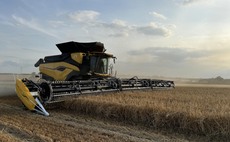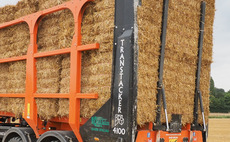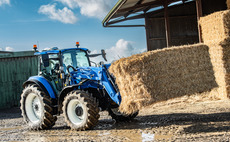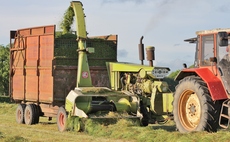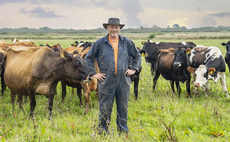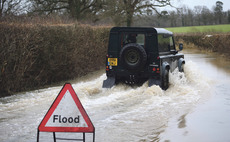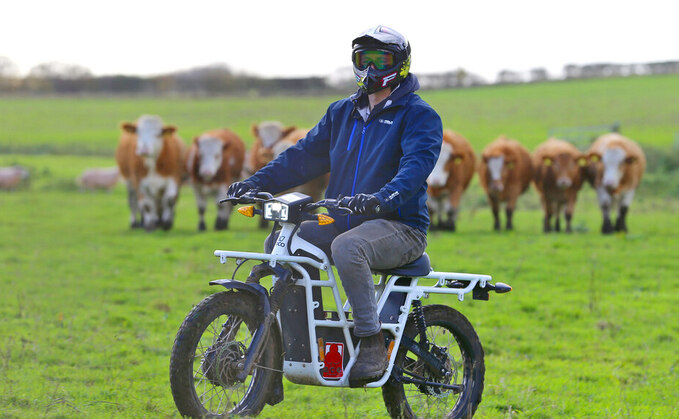
Ubcos electric 2X2 utility bikes have recently started landing on UK shores. Aimed squarely as an alternative for ATV users, Alex Heath put a pair of the manufacturers bikes to work, to understand where they sit in the market.
Designed and developed in New Zealand, Ubcos formation and initial idea of an electric utility bike suitable for agricultural applications started in 2014. After several years of prototypes, testing and sourcing investment, it has recently launched the fifth generation of its 2X2 utlity bikes.
While the original idea of a light weight, battery powered machine remains, extensive work has been carried out to strip out weight and ruggedize the unit while increase the performance and efficiency of the battery and motors.
The bikes are now being imported into the UK through subsidiary company Ubco bikes UK. The company has started enrolling dealers throughout the country with 12 currently stocking the bikes.
To see if the bikes are a viable alternative to a traditional quad, we spent a week on the saddle of the firms Work and Adventure models, both fitted with the largest battery available.
Models
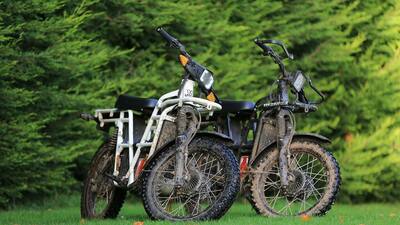
Two models make up Ubco's 2X2 range. The Work is a bare bones, no frills bike, designed specifically for off-road farming duties, with a starting price of £5,000. The Adventure is a hybrid version, happy enough off-road, but with the necessary homologation for road use and commands a £208.33 premium over the Work.
You can pick any colour you want, too, as long as it is black or white. The Work comes in the former colour scheme, while the latter is reserved for the Adventure.
Major differences between the two include the choice of tyres with the Work featuring an aggressive off-road tread pattern and the Adventure a multi-purpose version, with enough bite to pull it through sloppy conditions, but a larger contact area when on tarmac.
Being road registerable, the Adventure also features indicators, an impressive 2,100 lumen LED main beam and a dash display, showing the machine's main parameters including speed, battery level, and motor temperature. To illuminate a greater working area, the Work features a 2,400 lumen LED floodlight.
The Work was invariably better off road, but only marginally so. However, on tarmac is where the differences between tyre choices became apparent, with the Adventure being composed throughout, while the Work could get a little squirmy if the surface was wet or greasy.
Ultimately, the choice between the two boils down to what it will be doing. If working around mobs of sheep up steep slopes the black version is probably the better option, however, for checking stock, especially if any road work is involved, the white version is more suitable.
Batteries and motors
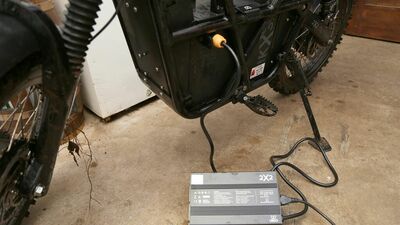
Within the alloy battery box are banks of 3,400mAh lithium ion cells, similar to those found in power tools. These provide a nominal voltage of 50.4V, a continuous current of 80A and a peak discharge of 120A.
Rated to IP66, the battery box is protected against dust and high pressure water jets, with rubber seals and gaskets around all the plug ports.
The manufacturer is offering three battery capacities; 2.1, 2.6 and 3.1kWh. The largest battery, as tested, weighs in at 18kg, with the middle at 16kg and the smallest at 14kg. Ubco reckons for ag use the smallest would be sufficient, depending on workload. However, for peace of mind we would opt for the larger, just for the extra range it gives.
Arriving with half its charge, we rode the bikes intensively for a day, plugging them in that night, still with charge in them. Over the course of the week, each bike was used for about six hours per day and after four days still had juice. The manufacturer says a range of 120km can be expected from the largest unit and we feel this could be achievable when riding on flat roads.
However, with a decent sized rider and any amount of hills, the quoted figure could soon be depleted.
motor
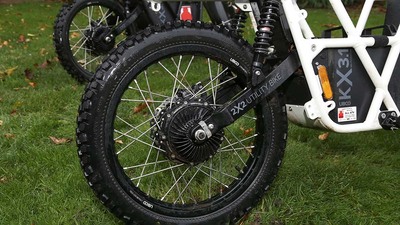
Batteries are removable, slotting into the frame of the bike, low down, keeping the centre of gravity in-line with the middle of the wheels. There is a strap to hold the battery in place and a lock to protect against those with light fingers, which uses the same key as the steering lock.
Bikes are supplied with a wall mounted charging unit with LED indication of the charging status. The charger lead plugs into the side of the battery. It takes about six hours to replenish the batteries.
Drive is provided to both wheels by the firm's Flux2 1kW brushless motors in the hub of each wheel. Most of the drive seems to come from the front wheel, with the rear assisting. The rear wheel really kicks in when the front starts to slip. Bearings are also sealed for durability.
When the throttle is released, the motors recoup inertia as the bike coasts, feeding it back to the battery through a regenerative braking process, in addition to hydraulic disc brakes. Motor braking performance is controllable through the app, while the lever brake performance is assured, stopping on a six-pence when needed.
Chassis
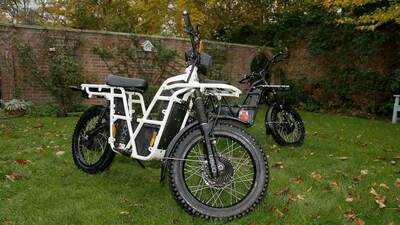
Both models use the same step-through chassis and associated hardware. The chassis is constructed of aluminium tubing, meaning the bikes are light, weighing just over 50kg without the battery fitted. It is wrapped around the battery, providing decent protection against knocks to power source and features a skid plate underneath.
Suspension is provided at the front by a coil and hydraulic damper fork arrangement with 130mm of travel, while at the rear a similar setup with 120mm of movement is used. Both have preload and rebound adjustment, making for a smooth ride.
Storage on the bike is at a premium, however, there are two racks; one behind the seat and one in front of the handlebars, to which cargo can be strapped. There is an area underneath the seat which with some imagination and a cut down five litre drum could be converted to hold some nick-nacks. It would have been good if the manufacturer had added or offered an option for storage in this location.
The build quality and attention to detail that has gone into the bikes is undeniable, with Instagram-worthy weld seams and nice features such as M8 nut recesses in the drop forged attachment lugs.
Technology
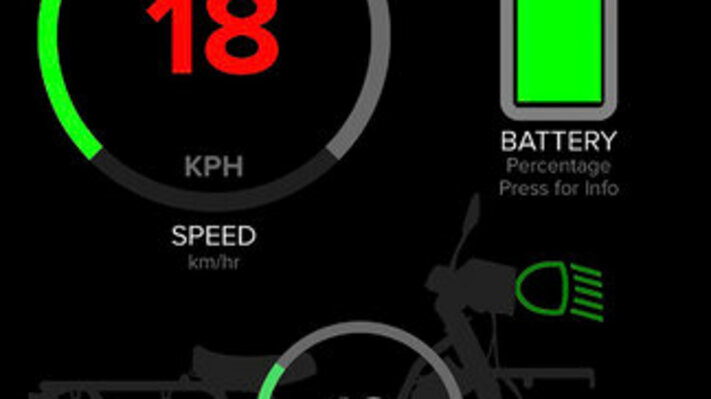
Technology features heavily on the bikes, but not to the extent that technophobes are unable to ride.
Turning on the bike is done with a fob, held down for three seconds. On the Adventure models it is easy to acknowledge the bike is on as the dash lights up, however, on the Work version you really have to listen for the barely audible beeps. This is an area we felt the manufacturer has gone a step to far, with a proper key being a better option, especially as the fob can be activated in your pocket, if a phone or wallet presses against it. The manufacturer says a new shroud for the fob is on its way to stop this. It also adds a key was considered, however its rational is that there is no place in the system for water or dirt ingress, so although a key would be nice, ultimately it creates a weak spot in the system.
To activate drive, a big red permission button is pressed. Neutral is automatically selected on the Adventure model when the kickstand is lowered, while on the Work drive remains active.
Connectivity also plays a big part with the bikes. Through a Bluetooth connection and the manufacturer's app, bike data can be viewed and parameters changed. This includes changing the modes of the bike, on/off road, which changes the responsiveness and riding characteristics, the responsiveness of the throttle and regenerative braking, as well a hunting mode which turns off all the lights.
The individual wheel motor temperature can be viewed as can the speed of the bike and condition of the battery. It is particularly useful for the Work model as there is no data displayed on the bike itself.
Updates to the bike firmware are also downloaded and installed through the app, which the manufacturer says will optimise the bikes' performance. The app itself is clearly laid out and easy to navigate.
Practicalities
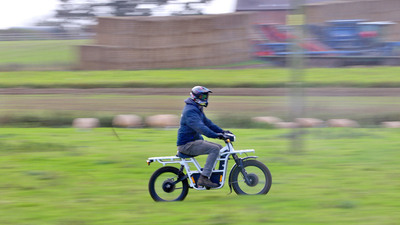
Even for novice riders, the bikes are easy to handle. With the majority of the propulsion coming from the front wheel, the bike pulls itself in the direction the wheel is facing. It is impossible to get the front wheel to lift from the ground when setting off, no matter how hard you pull up on the handlebars or twist the throttle. This makes the bike easy to control and confidence soon grows when riding it.
Its lightweight build with most of the weight down low means it treads lightly, but can be encouraged along if traction is lost. It also means that righting the bike off its stand is not a workout, as can be the case with some motocross bikes.
Top speed is a sedate 45kph in European models. It is fast enough, but 50kph would be better. Uptake of speed to its limit is brisk and serenely quiet, with just a faint whirr from the motors and slight drumming from the tyres. It can easily outpace errant sheep on rough fields, while checking stock can be done quickly and efficiently, the majority of the time they will not realise you are there.
Likewise, arriving into the yard has to be done with precaution, to prevent scaring the living soul out of anyone further than a few metres away.
Our Verdict
We have always wondered where electrification in agriculture would fit. Yes, yard-based loaders are an easy candidate to address, but with the Ubco, it now seems the farm's bike can also be a viable way of increasing ‘green' credentials while saving on running costs, with just the price of the electricity used the only operational cost.
The manufacturer has certainly hit the right note with its 2X2 utility bike. Easy to ride and operate, they combine swift enough performance with the ability to ride all day, without the noise or expense of a petrol powerplant. The ease of plugging the bike in overnight must not be underestimated.
The build quality and thought that has gone into the design is clear to see, with a reassuringly sturdy, yet light weight feel. The choice between the two model options will come down to circumstance, however, with resale opportunities back into the consumer market, for a shade over £200 the Adventure seems a savvier purchase.
Test specs
- Model: Ubco 2X2 utility bike
- Battery: 3.1kWh
- Motors: Two, 1kW brushless DC air cooled Flux2 motors
- Top speed: 45kph
- Chassis: 7027 grade aluminium tube
- Suspension: Front, 130mm travel. Rear, 120mm travel.
- Unladen weight: Work 69kg Adventure 71kg
- Maximum payload: 150kg including rider
- Price (ex. VAT): Work £5,375 Adventure £5,583.33







